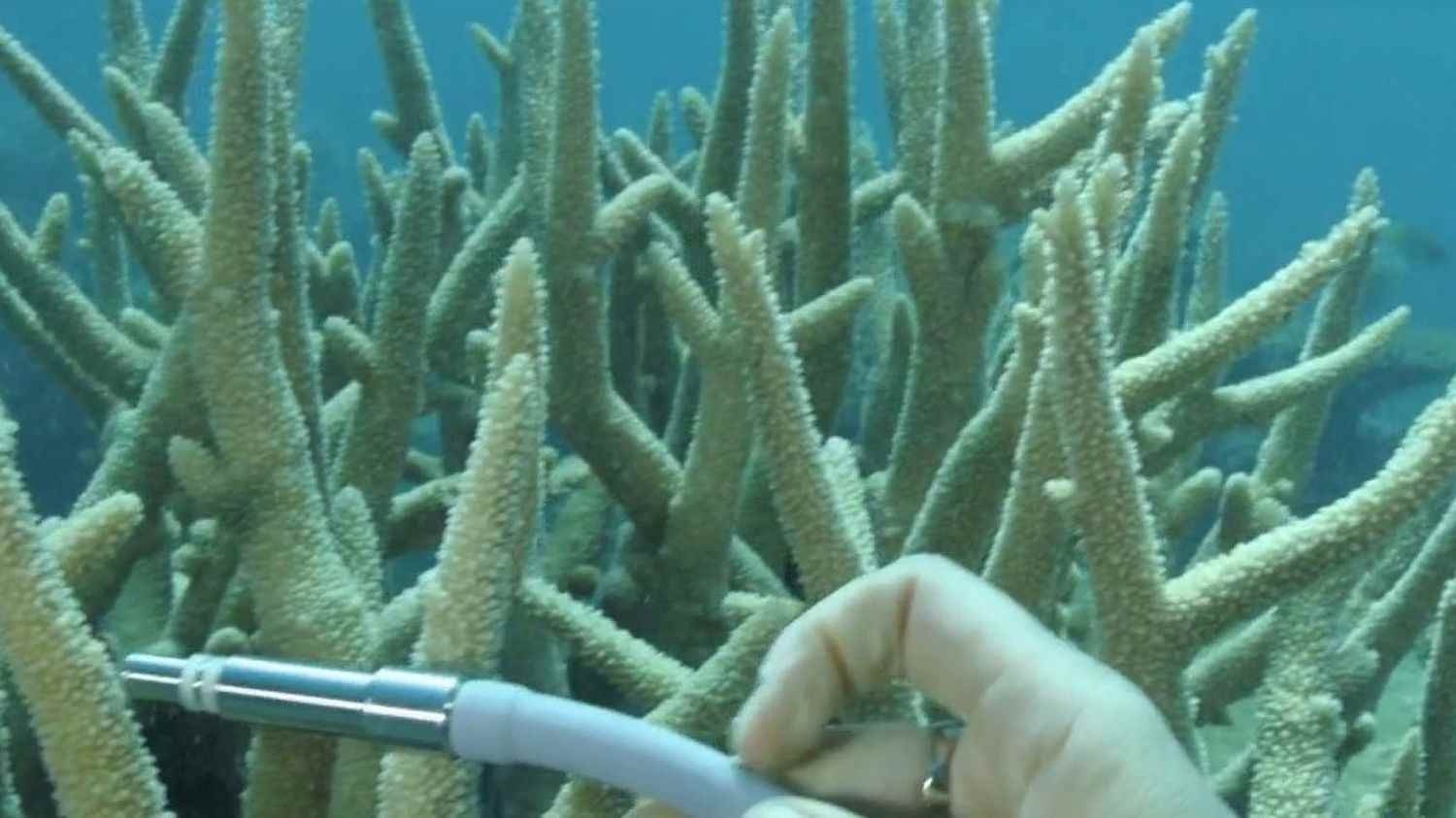Posted
Update
Article written by
In the New Caledonian lagoon, corals manage to survive in extreme conditions, without scientists being able to explain it yet. But a clue emerges.
It is one of the natural treasures of New Caledonia. Its coral reef is the second largest in the world. 1,600 km of wonder. Every week or so, the teams of the Institute of Research for Development come out of their laboratory. For years, they have been scientifically monitoring the state of health of the New Caledonian reefs which are suffering from the warming of the waters. Using a tool, they measure the fluorescence of corals, an indicator of their ability to reproduce. Even if it resists better than other coral sets in the world, the Caledonian coral reef is suffering. A quarter of the corals are now in poor health and this is probably only the beginning.
However, New Caledonia has an extraordinary and unique coral reef, discovered by the Italian researcher Riccardo Rodolfo-Metalpa. A site that intrigues scientists around the world, located in the mangroves of the Caledonian lagoon. Here, the acidity of the water is very strong, there is little oxygen and above all, the water temperature is already 2 to 3 degrees higher. An unlivable environment and yet 66 different species survive these extreme climatic conditions. Scientists call them “super corals”. Since this discovery in 2016, teams of French, Japanese and Australian scientists have taken turns trying to unravel the mystery of super corals. Researchers now favor the hypothesis of the presence of metals on this site. They would act as vitamins on the corals when the temperature of the water warms up. The research has only just begun.
